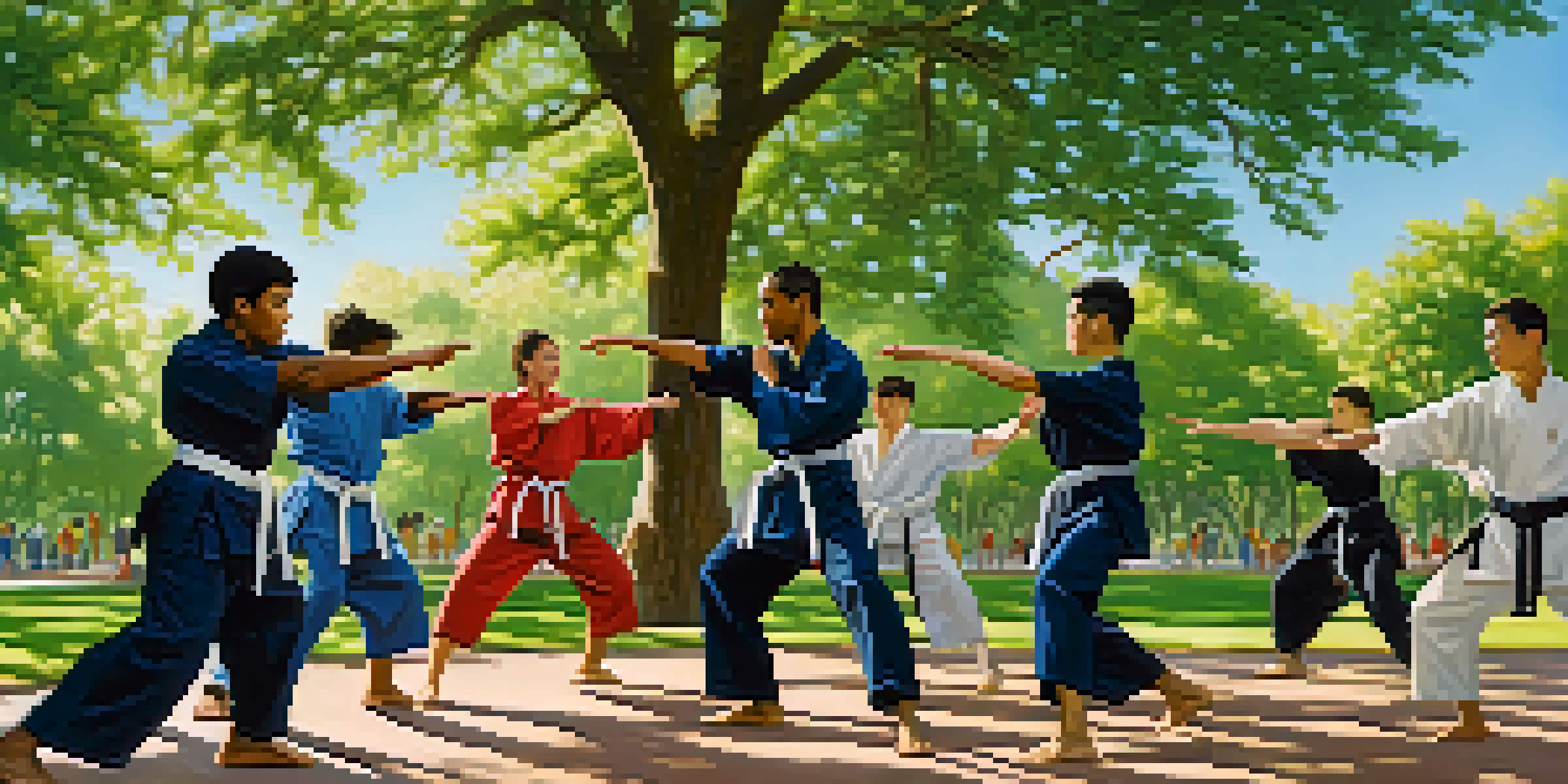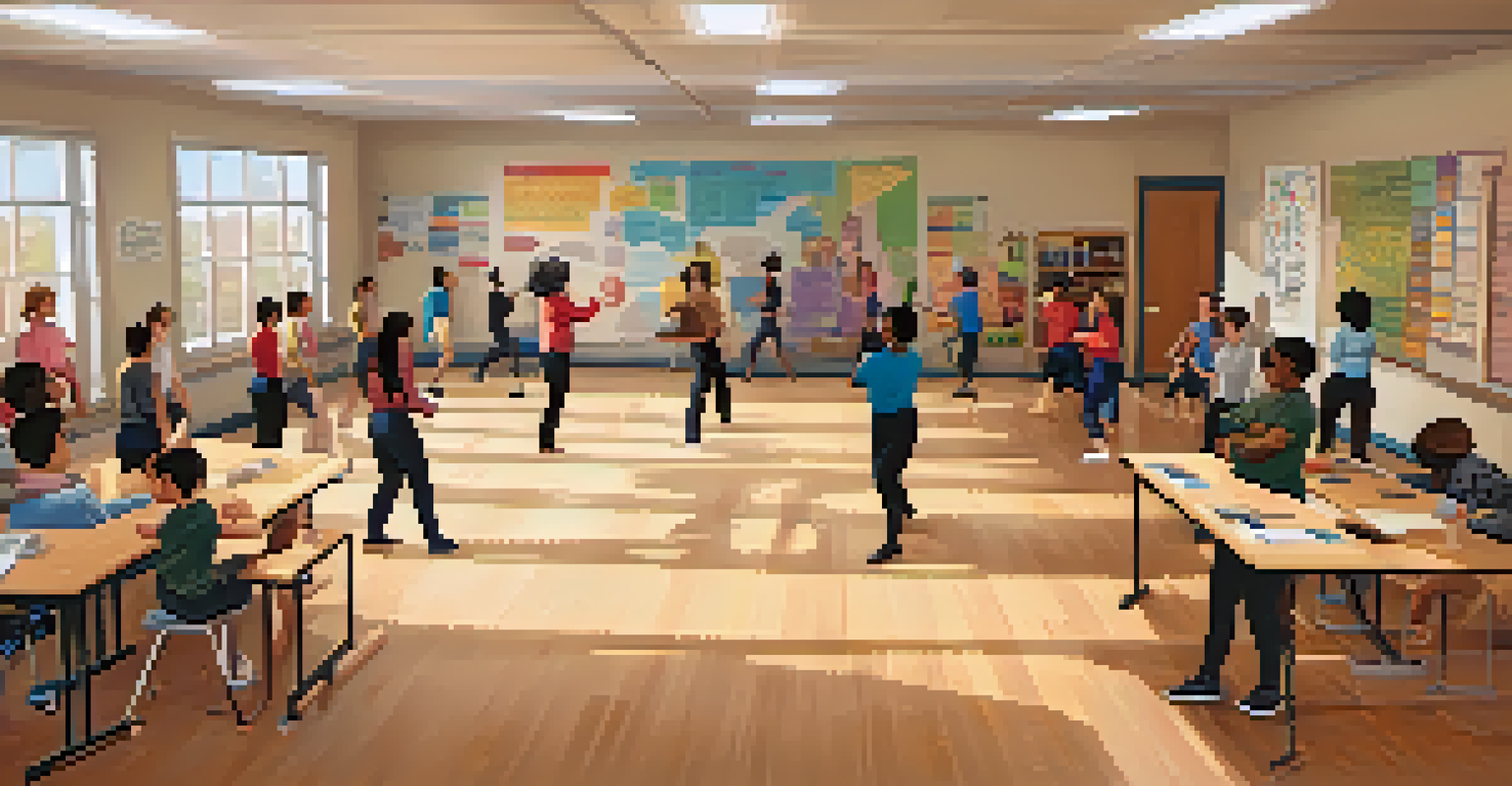The Psychology of Peer Pressure in Self Defense Situations

Defining Peer Pressure and Its Impact
Peer pressure is the influence exerted by a peer group on an individual, often pushing them to conform to group behaviors. This phenomenon can be particularly powerful in high-stress situations, such as self-defense scenarios. When faced with a threat, individuals might feel compelled to act in ways that align with their peers' expectations, even if these actions go against their instincts.
The greatest weapon against stress is our ability to choose one thought over another.
In self-defense, peer pressure can lead to both positive and negative outcomes. On one hand, it may encourage individuals to stand up for themselves and others, fostering a sense of solidarity. On the other hand, it can also prompt risky behavior or escalate conflicts, as people may feel they need to prove their toughness or loyalty to the group.
Understanding the dynamics of peer pressure is crucial for effective self-defense training. By recognizing these influences, individuals can learn to make more informed decisions in the heat of the moment, prioritizing their safety and well-being over group expectations.
The Role of Social Identity in Self-Defense
Social identity refers to how individuals define themselves in relation to the groups they belong to. In self-defense situations, this identity can significantly affect how one reacts when peer pressure is present. For instance, someone who strongly identifies with a group may feel an overwhelming urge to act in a way that aligns with the group's norms, even if it contradicts their personal values.

This need for belonging can lead to a heightened sense of responsibility to protect group members, sometimes encouraging aggressive or reckless behavior. For example, if a group member is threatened, the desire to defend them can override personal safety concerns. This instinct can be noble but can also lead to unintended consequences if not managed properly.
Understanding Peer Pressure's Impact
Peer pressure can influence individuals' actions in self-defense situations, leading to both positive and negative outcomes.
Training that emphasizes the importance of individual decision-making can help mitigate the adverse effects of social identity in self-defense. By fostering self-awareness and critical thinking, individuals can navigate these complex social dynamics while maintaining their safety.
Emotional Responses Under Peer Pressure
When confronted with peer pressure in a self-defense scenario, emotions can run high. Fear, anxiety, and adrenaline can cloud judgment, making it difficult to think clearly. This emotional turmoil often exacerbates the impact of peer pressure, pushing individuals toward actions they might not otherwise consider.
In the face of adversity, we have a choice: to rise above peer pressure or to succumb to it.
For example, in a group setting where one person feels threatened, others may rally around them, driven by a mix of fear and the desire to support. This collective emotional response can amplify the pressure to act swiftly, sometimes leading to impulsive decisions that may escalate the situation instead of resolving it.
Recognizing these emotional triggers is essential for effective self-defense strategies. Training that incorporates emotional regulation techniques can empower individuals to stay calm and focused, allowing them to respond to threats more thoughtfully, rather than reacting purely on impulse.
The Bystander Effect and Peer Dynamics
The bystander effect refers to the phenomenon where individuals are less likely to offer help in an emergency when other people are present. In self-defense situations, this effect can be heightened by peer dynamics, where individuals may wait for someone else to take action. This hesitation can lead to critical moments being lost, risking the safety of those involved.
For instance, in a crowded area, a person may feel that someone else will intervene if a confrontation arises. This belief can lead to inaction, leaving potential victims vulnerable. The pressure to conform to the group's behavior can stifle individual initiative, making it crucial to break this cycle.
The Role of Social Identity
A strong social identity can compel individuals to act against their values in high-stress scenarios due to group loyalty.
Addressing the bystander effect through awareness and training can encourage individuals to act decisively when needed. Empowering people to recognize their responsibility in group situations can help create a culture of proactive self-defense, where individuals feel confident to step in and support each other.
Cultivating Positive Peer Influence
While peer pressure often carries a negative connotation, it can also be a force for good. Positive peer influence can encourage individuals to engage in self-defense training, prioritize safety, and support one another in challenging situations. When groups foster an environment of mutual respect and responsibility, individuals are more likely to feel empowered to act wisely.
For example, a group of friends who regularly practice self-defense together can build confidence and competence in their skills. This shared commitment not only strengthens their ability to respond to threats but also reinforces positive behaviors, such as de-escalation and communication.
Creating a culture of positive peer influence requires intentionality and awareness. By encouraging open discussions about self-defense and safety, groups can cultivate an atmosphere where individuals feel supported in making decisions that prioritize their well-being.
Training Strategies to Counteract Negative Peer Pressure
Effective training can equip individuals with the skills to resist negative peer pressure during self-defense situations. Role-playing scenarios that simulate high-pressure environments can help participants practice making decisions that align with their values, even when faced with group dynamics. These exercises can build confidence and reinforce the importance of individual judgment.
In addition, incorporating discussions about peer pressure and its effects into self-defense training can foster awareness among participants. By understanding how peer dynamics influence their behavior, individuals can develop strategies to counteract these pressures and make safer choices.
Training to Resist Negative Influence
Effective self-defense training should focus on building mental resilience and decision-making skills to counteract negative peer pressure.
Ultimately, training should focus not only on physical techniques but also on mental resilience. By preparing individuals to navigate the psychological aspects of peer pressure, they can respond more effectively in real-life situations, prioritizing their safety above group expectations.
The Importance of Self-Reflection in High-Stress Situations
Self-reflection plays a crucial role in understanding how peer pressure affects our decisions in self-defense scenarios. Taking time to evaluate past experiences can uncover patterns in behavior, revealing how group dynamics influenced choices during stressful moments. This insight enables individuals to recognize triggers and prepare for future situations more effectively.
For example, someone who reflects on a past incident may realize they acted against their better judgment due to peer pressure. Understanding this can empower them to develop strategies for remaining grounded in future scenarios, ensuring they prioritize their safety and values.

Encouraging self-reflection as part of self-defense training can enhance individuals' situational awareness and decision-making skills. By cultivating a habit of introspection, people can learn to navigate peer pressure more effectively, ultimately leading to safer outcomes in high-stress situations.